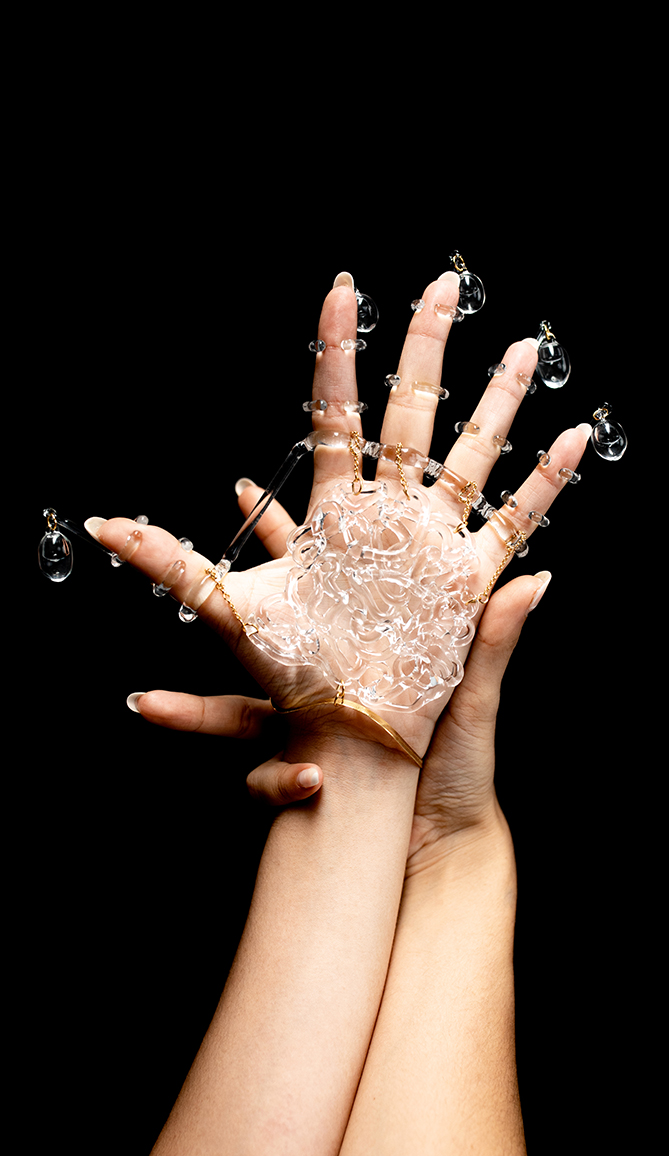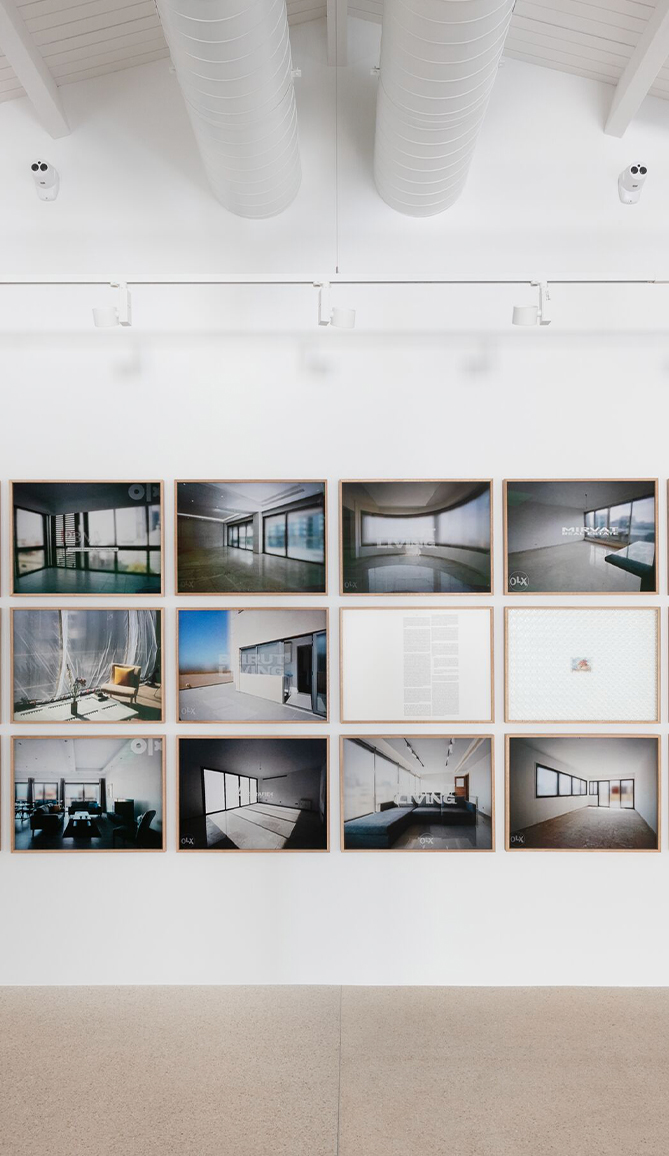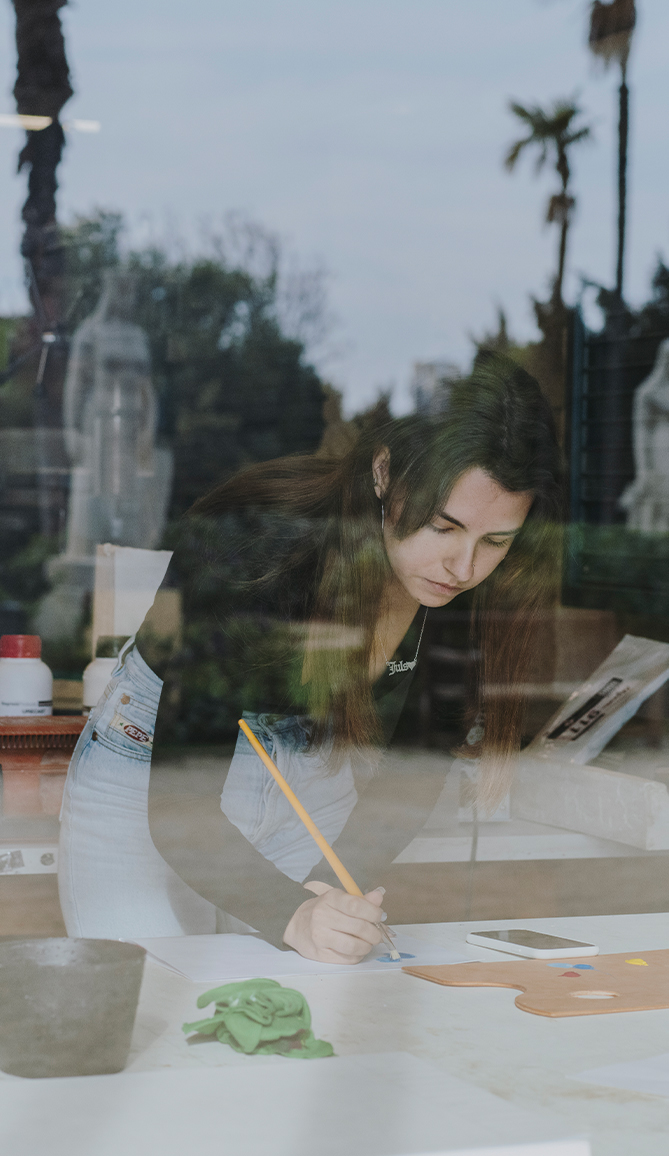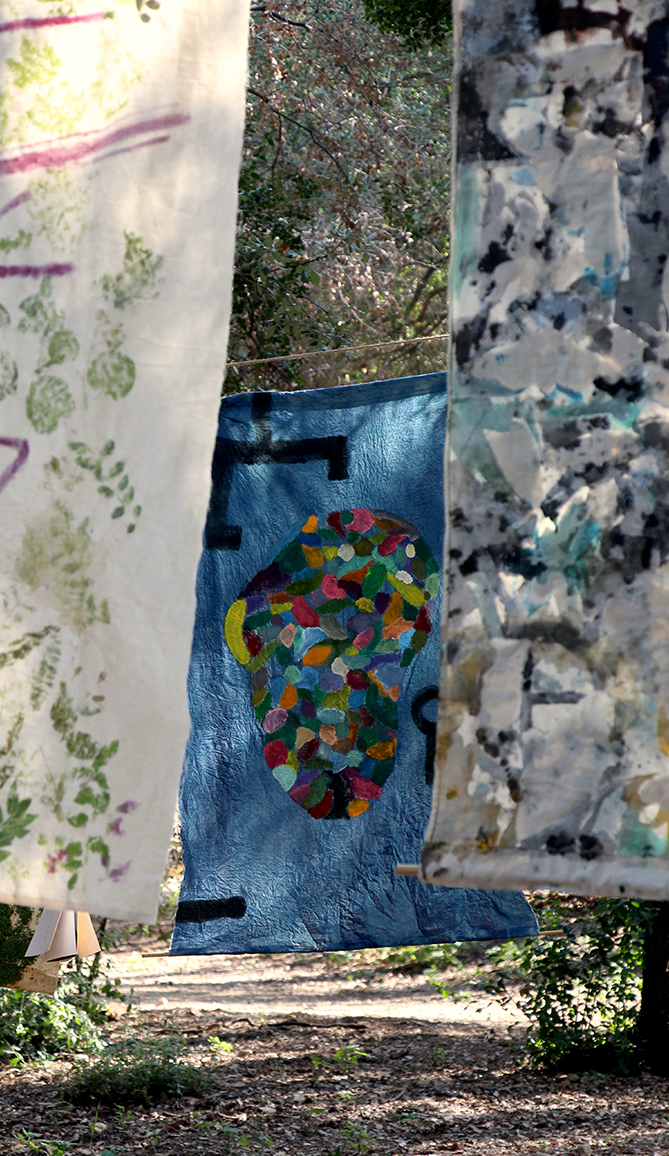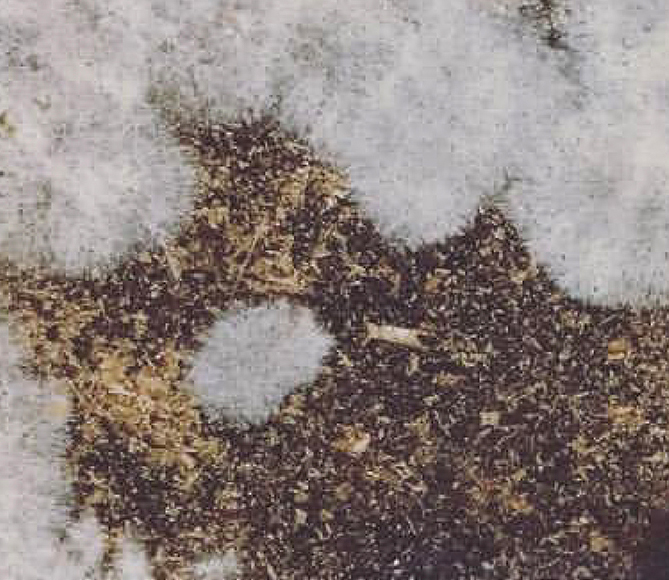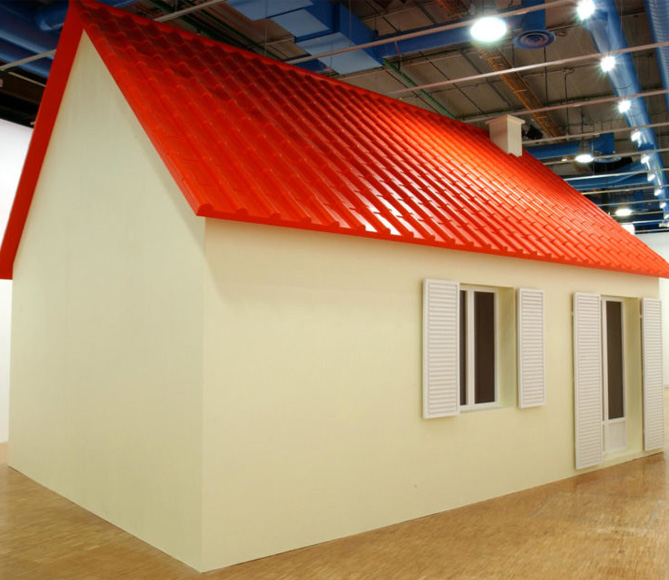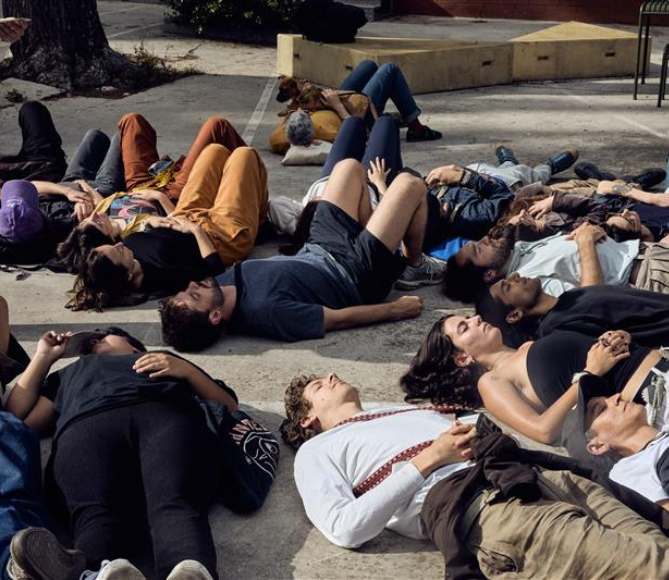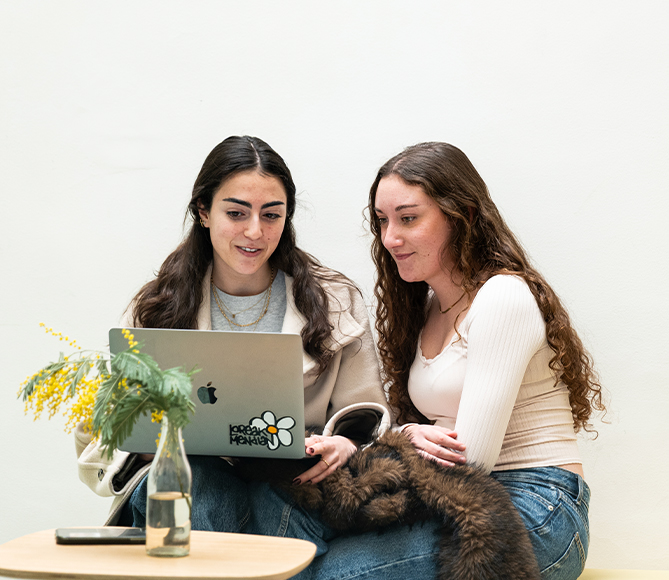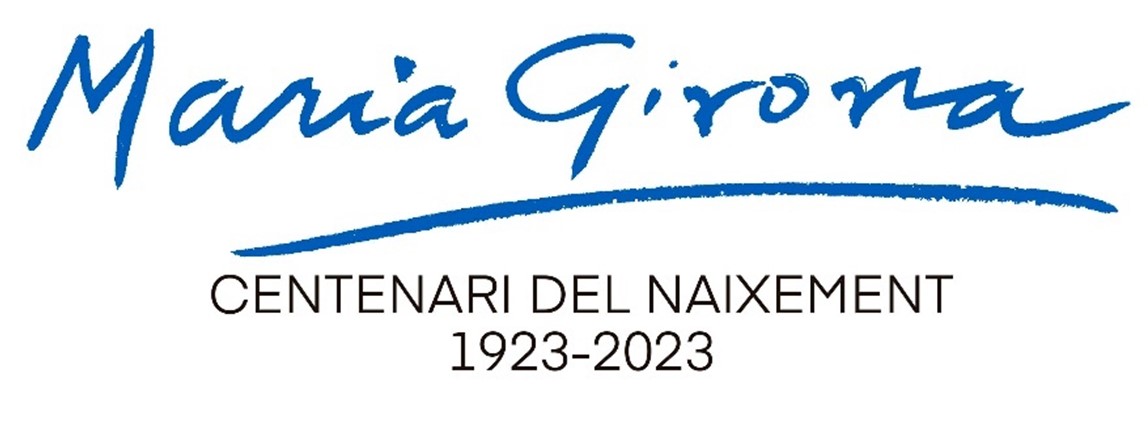
Maria's painting is too brutally honest for anyone to understand. The most characteristic features of her painting include, on the one hand, the total coherence between her personality and her work and, on the other hand, her wholehearted fidelity to a way of doing things the way she set out to do them from the beginning. Yet her objectives never prevented her from taking interest in other styles and movements. In other words, her desire to see and understand has always been fundamental.
Handwritten text from the diary of Albert Ràfols (24 April 1992)
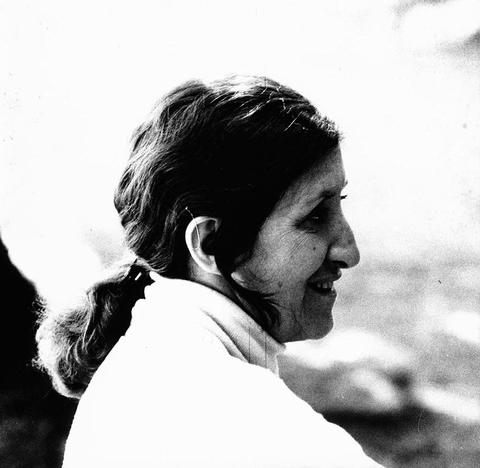
Photograph by Albert Font in the Garden Transformation Project at a 1:1 scale (1972).
Maria Girona, co-founder of EINA and a fundamental figure for her historical, artistic, and teaching connections with the school, was an invaluable presence during the evolution of EINA, first as a school then as a centre linked to the Autonomous University of Barcelona, thanks to her enthusiasm and constant support.
Her career is worth remembering thanks to her social intelligence, delicacy, and work ethic, imbued with natural sociability that reflected her discreet personal qualities and wealth of wisdom and humanity. Maria Girona's career embraced everything from being a member of the Study Council and the EINA Foundation Board of Trustees to serving as the Head of Art Studies.
Teaching at EINA
During the period from 1986 to 2003, Maria Girona co-directed the Art department with Antònia Vilà. The studies associated with this department were based on a pedagogical programme that expanded thanks to the participation of artists and humanists who were responsible for leading special workshops and subjects that were already present in the curriculum of the Art and Design departments. During this period, the Art and Design areas grew and became separated into departments with the possibility of showcasing new aspects of production in interior and graphic design and opening up the novel path of product design, which had been developed rather inconsistently at EINA until then. Moreover, the school also expanded its team of professors in all these areas. The art workshops played a cross-disciplinary role between the departments, providing a stimulating contemporary framework full of diversity and dynamism thanks to guest artists, a very characteristic feature at the school.
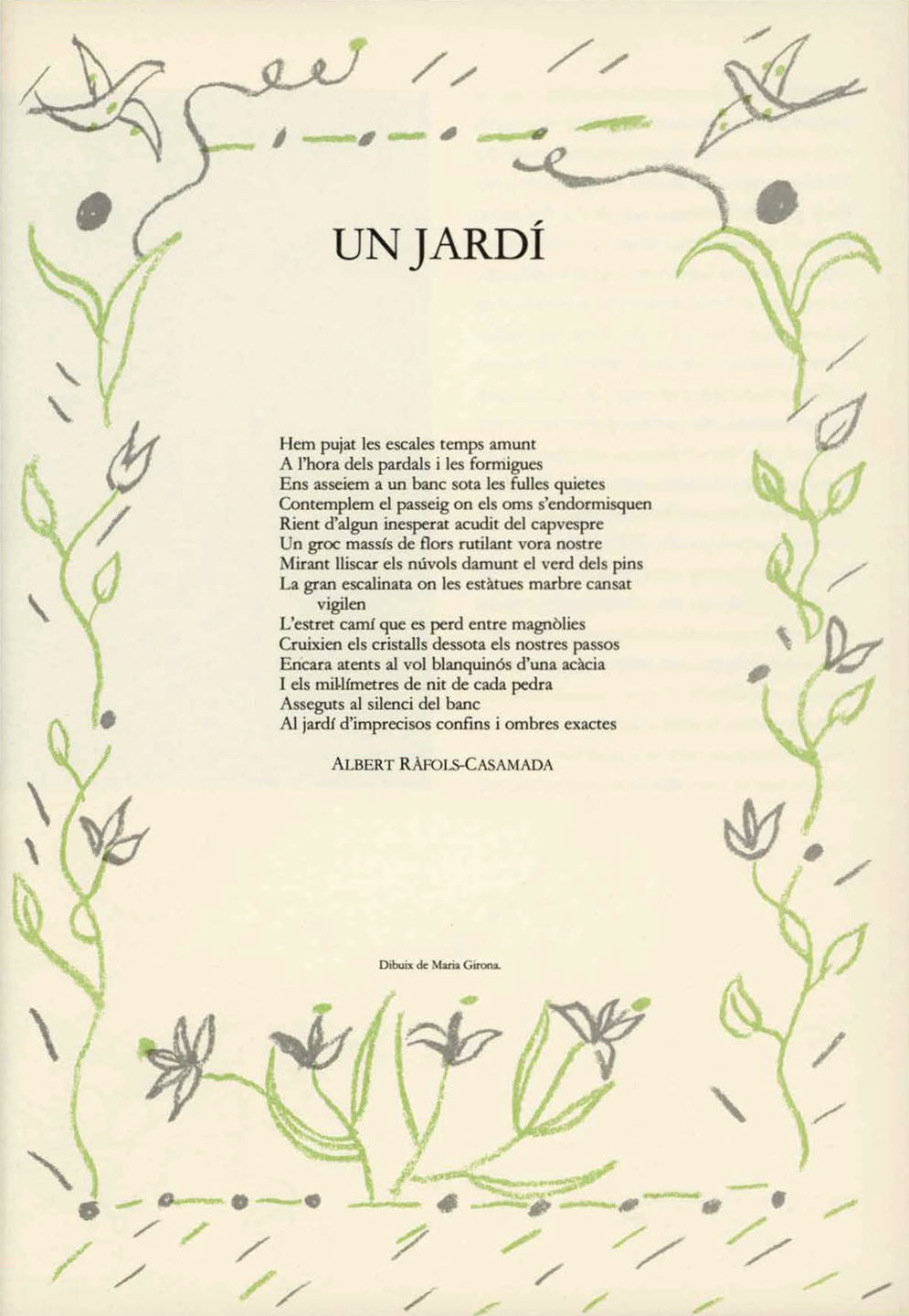
Regarding her work as an EINA professor, Maria Girona wrote in her personal diary now held in the EINA Archives: “EINA has been extremely important to me. Although I haven't taught many classes, mainly drawing courses, I am part of the Pedagogical Committee, which is very interesting particularly because our work is quite experimental and always new. Those of us who form part of this committee see many possibilities at a school like EINA, in terms of the students yet also for us: always learning new things and being able to put into practice the stimuli that young people and all of us need to give the best of everything we have within us.”
The poetry and collage cycles taught jointly by Albert Ràfols and Maria Girona, featuring collaboration by Toni Marí, Rosa Tarruella, Jaume Vallcorba, Sam Abrams, and Carles H. Mor, brought the interdisciplinary communication of poetry closer to the EINA community through symbolic and concrete games in which images made from words took on a diversity of interpretations.
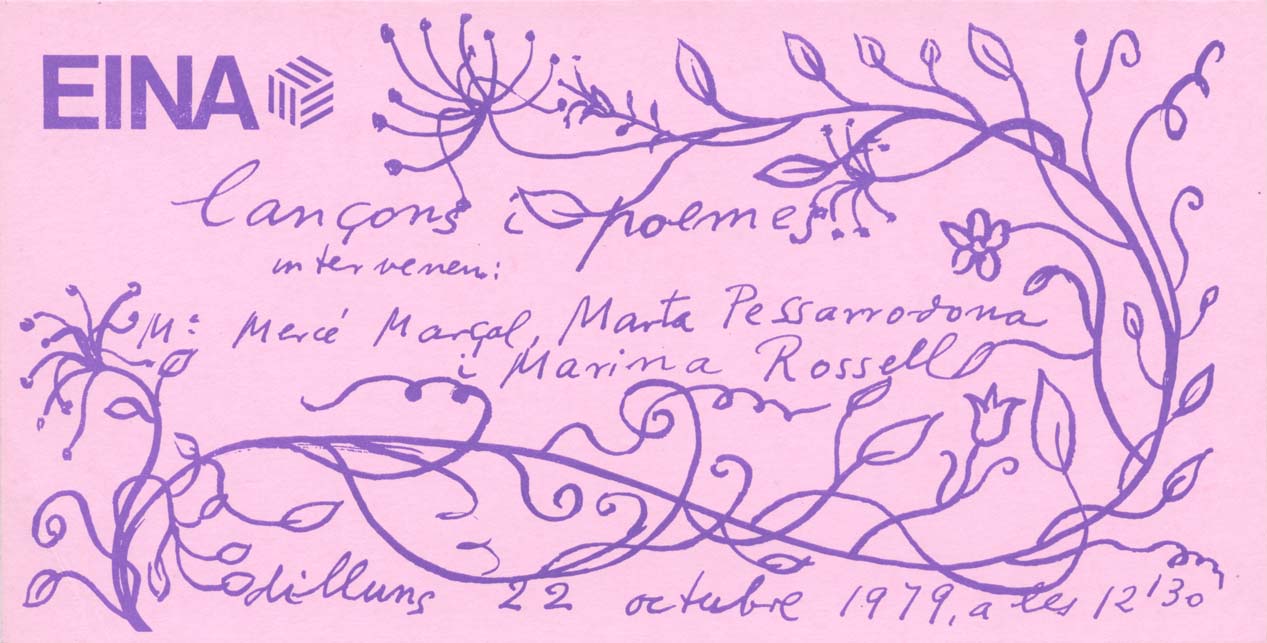
The subject entitled Techniques on Paper by Maria Girona incorporated drawing instruction into EINA studies. The subject sought to teach students knowledge of the different means of graphic expression (pencil, India ink, pastel, collage, mixed techniques) on paper media, as well as learning about vision as a result of analytical drawing and expressive ability aimed at transmitting taste and sensitivity.
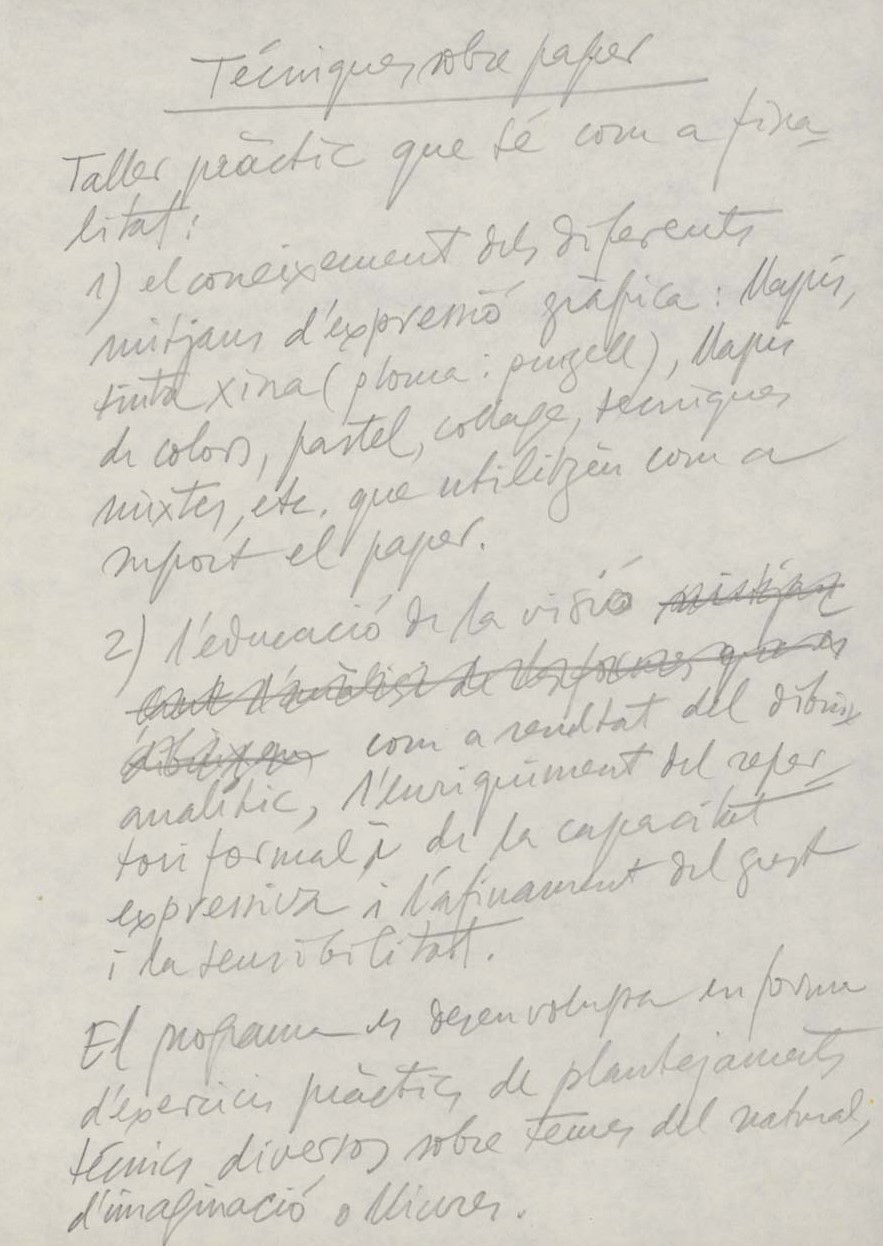
Description of the subject Techniques on paper taught by Maria Girona (1980s)
In addition to professors Patricio Vélez, Francesc Artigau, Serra de Rivera, and Sergi Aguilar, a long list of many other artists also contributed to EINA over this period, whether participating in different special courses or in intensive workshops, including Yamandú Canosa, Maria Helguera, Xavier Olivé, Santi Roqueta, and Ernesto Fontecilla. Artists who participated throughout this long period included Joan Hernández Pijoan, Amat, Keith Adams, Guinovart, Angel Jové Silvia Gubern, Joaquim Chancho, Antoni Llena, the Usquam group with Guillem Balmes and Pere Saralegui, Rosa Tarruella, Lluis Doñate, Susana Solano, Juan Carlos Robles, Quim Camp, Jordi Canudes, Isabel Banal, Enric Mas, Alicia Vela, and Roser Lacasa. Along the same lines, Albert Valera and Àngels Viladomiu were also present, and EINA added Patricia Lin, Jordi Colomer, Jordi Fulla, Xano Armenter, Salvador Juanpere, Eugènia Agustí, Montse Carreño, Cristina Pastó, Jo Milne, and many others as far as I can recall.
Events and performances at EINA
Maria Girona actively participated in many of the activities carried out at EINA throughout the 1970s and 1980s. One of the most noteworthy examples was the montage Garden Transformation Project at a 1:1 scale (1972), designed and carried out by Maria Girona herself, in which she reflected on reality, fiction, and perception. The theatre sets were made of hand-painted paper and were spread throughout the garden, forming a large collage that made it possible to see the wooden structures that supported them. The artificiality of its realism was highlighted by the contrast with the natural elements in the garden, while the latter elements took on a different meaning by being included in the fiction.
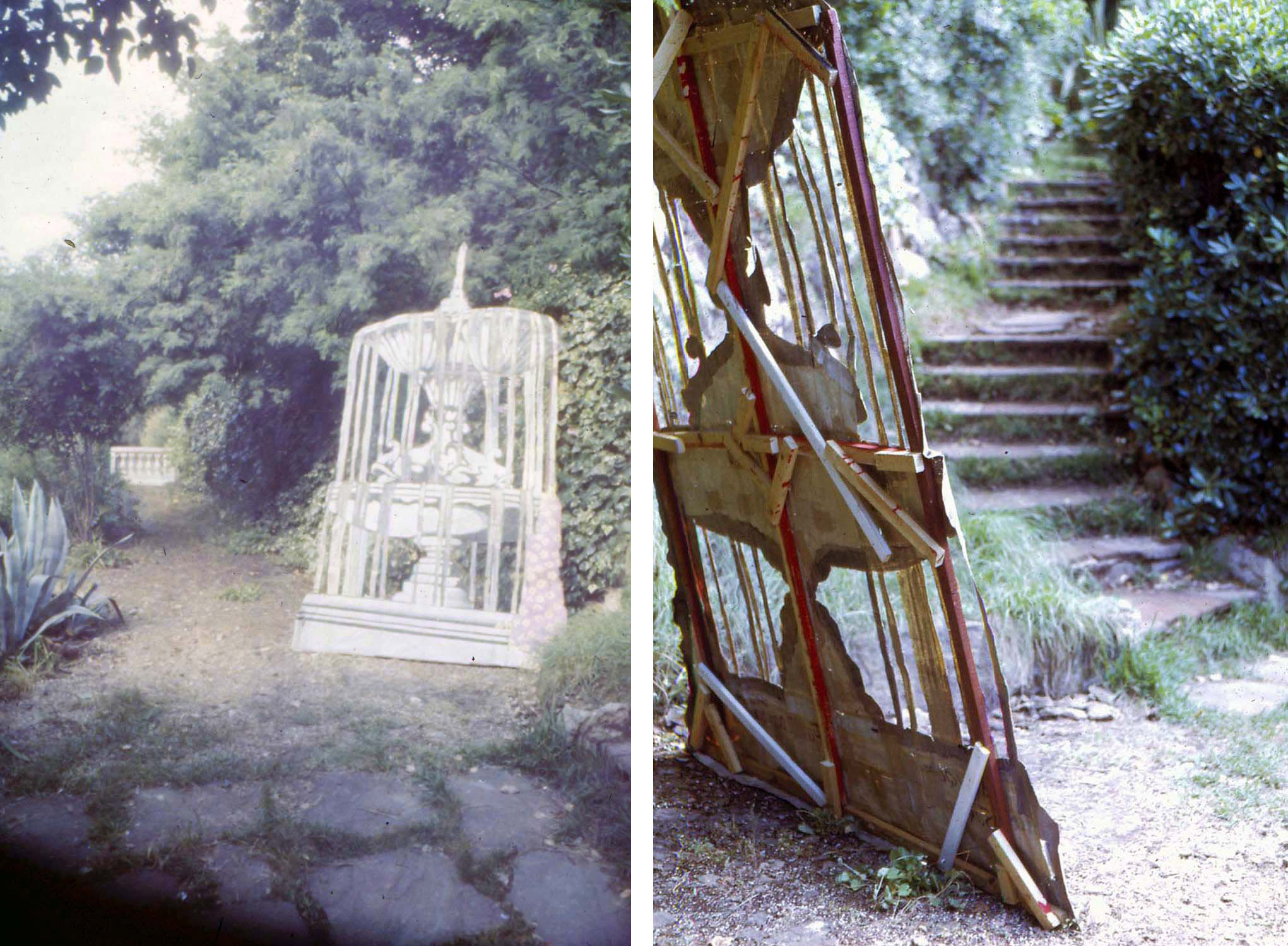
A few years later, in 1974, Maria Girona participated in the exhibition Around the trunk, designed by Albert Ràfols and Xavier Olivé, which showcased a temporary and partial transformation of the garden at the initial EINA campus by manipulating the tree trunks in different ways. Maria Girona took part in this by making a reproduction of herself that was installed on top of one of the trees in the garden.
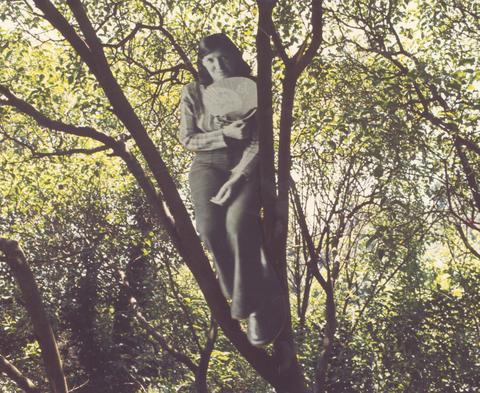
Work by Maria Girona for the exhibition Around the trunk (1974).
In 1980, she participated in the EINA exhibition June in the garden, an exhibition about the garden in the garden itself, in which the setting acted as an art gallery. The exhibition also involved a large number of professors and students from the school who exhibited paintings, drawings, sculptures, and photographs and carried out activities revolving around the space.
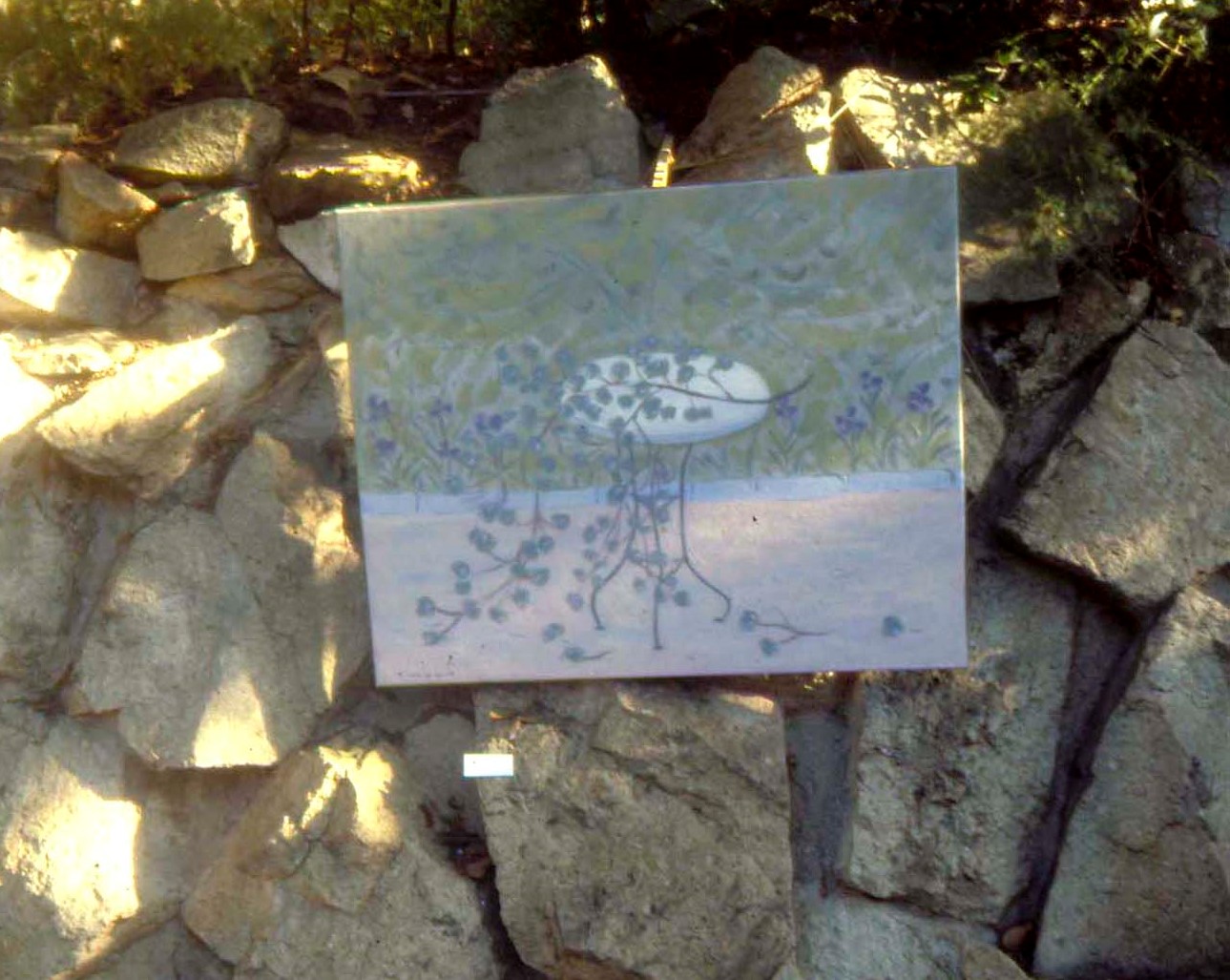
Work by Maria Girona for the exhibition June in the garden(1980).
In 1981, she took part in the seminar Taste and style: exchange of sensations, along with Sergi Aguilar, Francesc Artigau, Albert Ràfols, Xavier Olivé, and Francesc Todó. The seminar aimed to draw a link between an artist’s aesthetics and those of a chef and his restaurant. In this way, each participant collaborated in designing the meal and the corresponding menu. Maria Girona did this with the restaurant Suntory, the first Japanese restaurant in Barcelona.
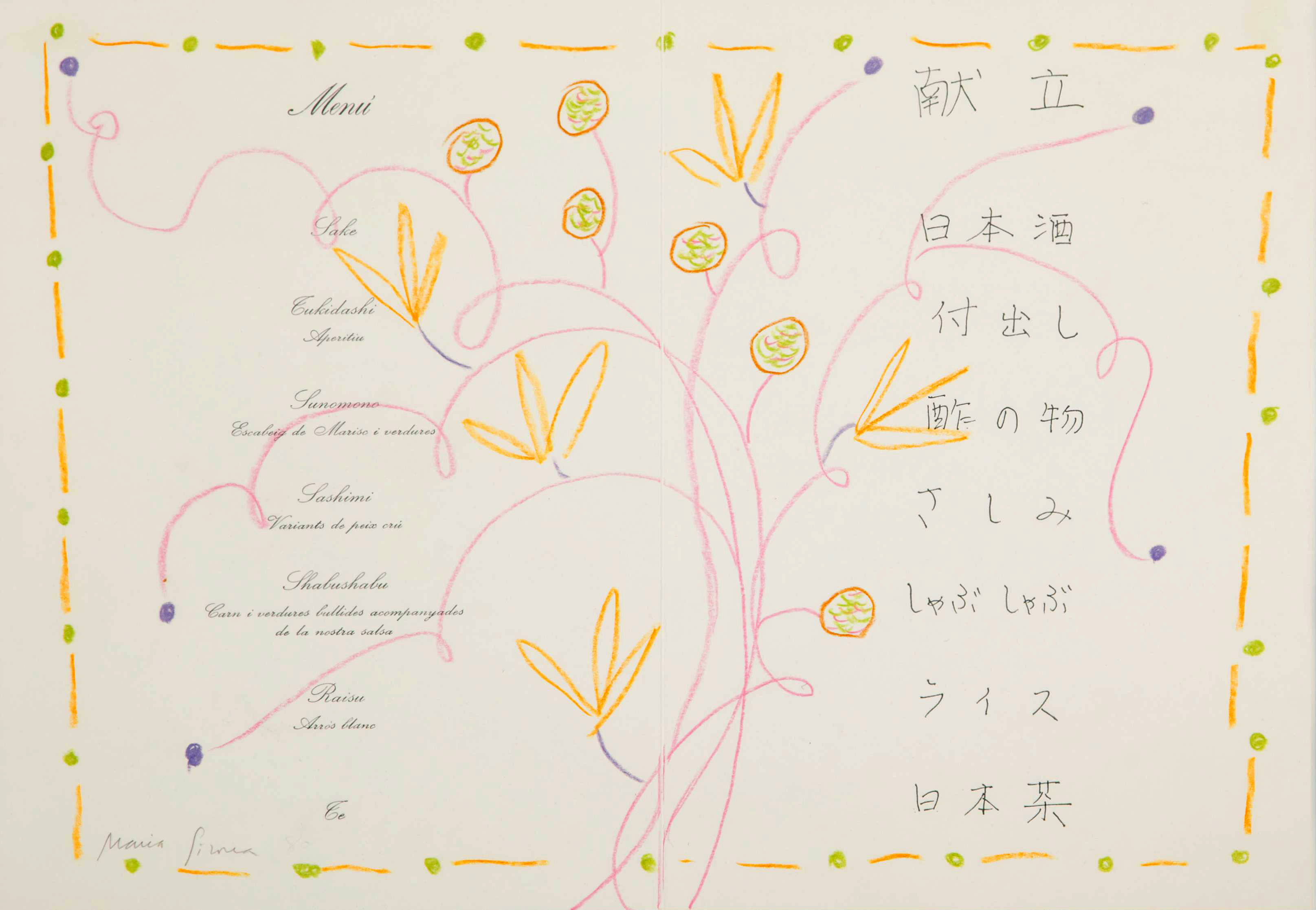
Menu by Maria Girona for the meal at the restaurant Suntory)
A few years later, in 1995, she also participated in the activity Taste and style, the artists' kitchen, held as the closing ceremony of the Second Catalan Culinary Conference. During this event, she drew a Swiss roll with berries and violets, which was prepared by the Arnadi Hospitality School and served as the dessert for lunch.
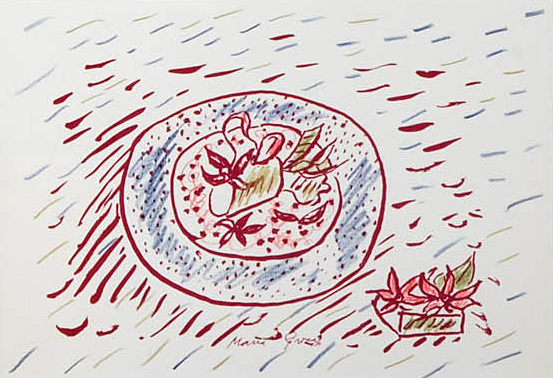
Dessert drawn by Maria Girona for the lunch menu for Taste and style, artists' kitchen (1995)
Artistic career
Maria Girona's life work focused heavily on painting, imbued with a dialogue with art where sensitivity and innocence were fundamental characteristics. The body of her work reveals a fidelity to a particular and personal world of Noucentista roots, above all attentive to the contributions of the avant-garde. In a clear and constant manner, she outlined her journey and established a dialectic with the modern movement as her artistic life took on an exquisite shape.
In her personal diary now held in the EINA Archives, Maria Girona comments on the influence of Albert Ràfols with the following words: “Albert's influence on my work has been very profound. Not fundamentally, because I see shapes and colours in a rather personal way, but nevertheless, as he says, for things that occur to him or comments on books or writing. He has a very original sense and, and for a person who is close to him, it's very stimulating. Seeing what he paints, even though our paintings are very different, or perhaps because of it, gives me a drive that I surely wouldn't have if I were alone. And, finally, how do I place myself within contemporary art? I can't place myself anywhere, but since I believe that my work is not shackled, I feel it's alive, I think that I can stand at a more or less high or low level within contemporary art. However, I'll leave [appreciating] the style of my painting to the critics, because the truth is that I don't know.”
Her career is represented in the EINA Foundation Art Collection with a total of eleven works in various formats and techniques such as screen printing, lithography, drawing, and oil dating from 1978 to 2006. The complete list of her works in the collection is as follows:
- Lliri blau (1978). Screen printing.
- Menú (1981). Drawing on paper.
- Finestra blava i vermella (1989). Oil on canvas.
- Matolls i mar (Cadaqués) (1989). Oil on canvas.
- Sense títol (1993). Drawing on paper.
- Gust i estil (1995). Drawing on paper.
- New York ’96 (1996). Oil on canvas.
- Camp de lli (1998). Oil on canvas.
- La palmera (2001). Oil on canvas.
- Cançó: poemes per a Maria (2004). Screen printing.
- Sense títol (2006). Lithography.
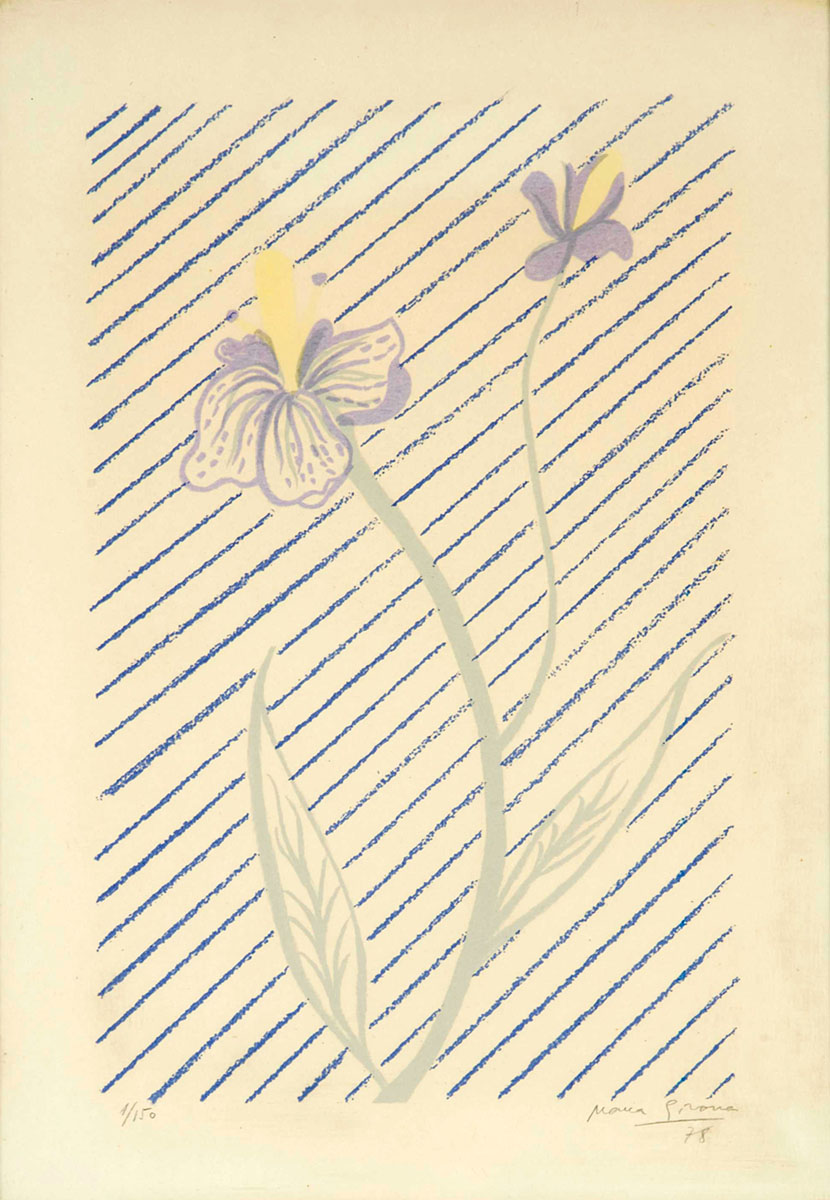
Lliri blau by Maria Girona (1978)
The keys of her work reveal a willpower crafted in the continuous exercise of drawing, painting, graphic work, textile design, and teaching, areas that are manifested with an apparently simple fertility and that communicate a comfortable sensuality that contextualized and added to our cultural memory. It is also worth mentioning that Maria's passion for painting unfolded without a doubt from an early sensitivity that was both profound and clear, developing a very personal and unmistakable language. These clues show us an intelligent person who was awake, organized, and curious about the world around her. With her painting, Maria managed to provide a tangible view of reality from her inner observation that cut through life, places, and the silent music of things in the private sphere that attracted her interest.
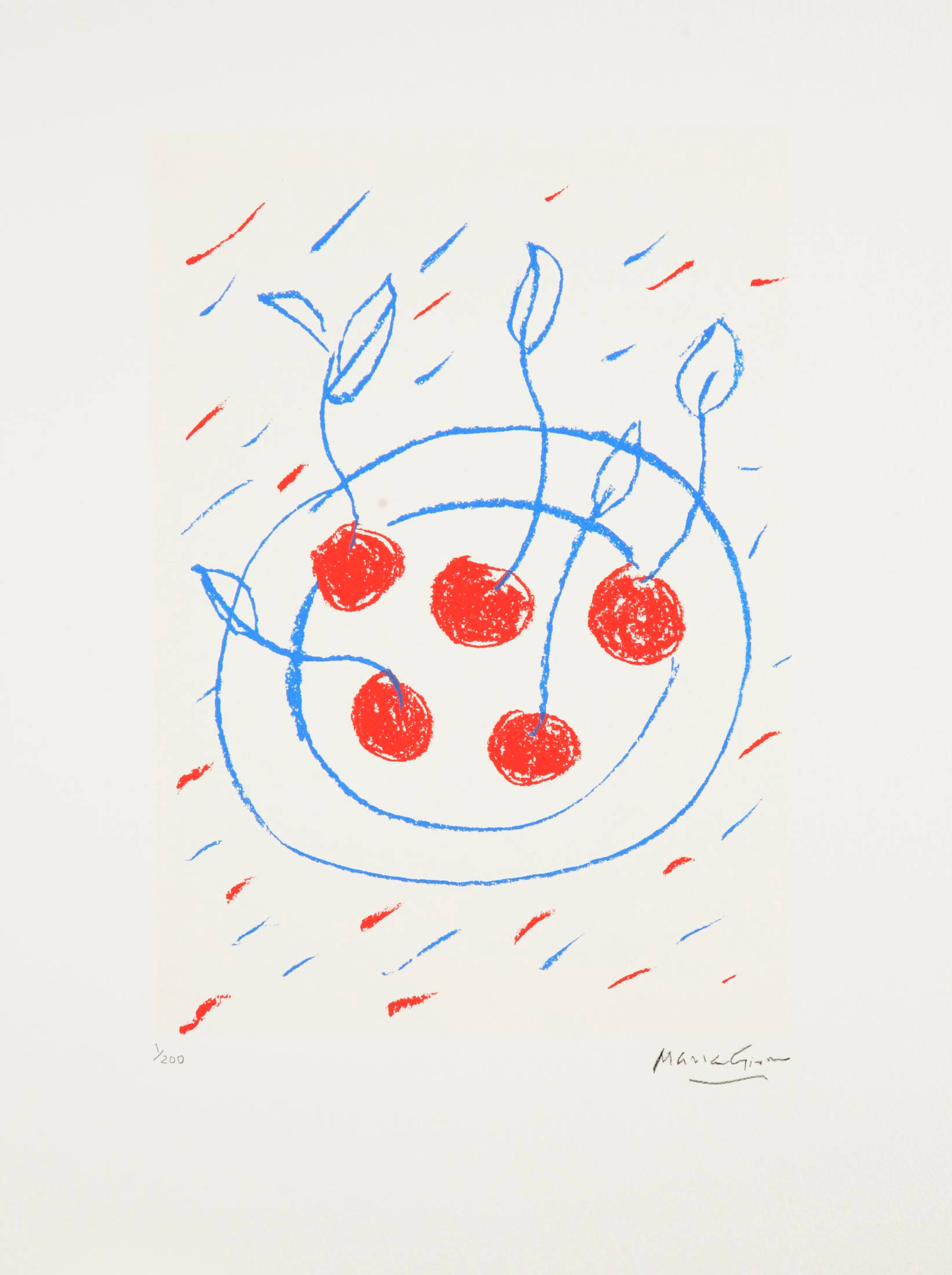
Sense títol (2006).
The tools she used to show her emotional world were built from a structured gaze through which she focused on the plasticity of her world which we can perceive from faraway distances, in which the close and quotidian is universalized through a chromaticism of its own that evolves from the immanent structure of the signs of her symbolic universe. Shapes and colours preside over a figurative abstraction of the space where the idea of the window frames the cities she visited and the places she lived: La Place des Vosges Paris, the skyscrapers of New York, her home in Barcelona, the port of Palma de Mallorca, or the landscapes of Calaceit and Cadaqués. She captured her surroundings, such as tables and garden chairs or the wisteria on the tower of the first EINA campus, bringing a new classicism to the visualization of pictorial genres.
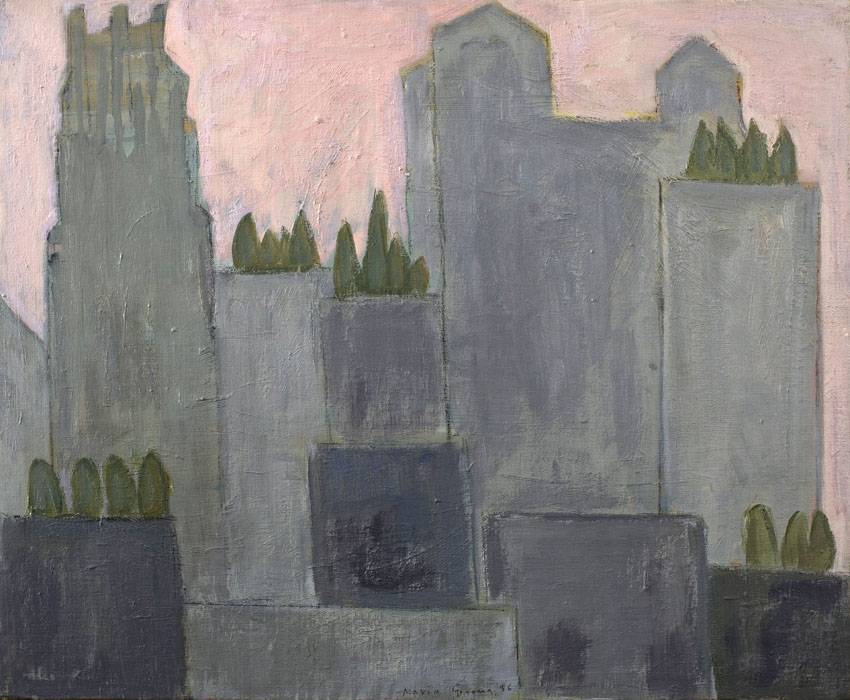
New York ’96 (1996)
In her pictorial imagery, Maria remained faithful to the "lesson of Matisse" and the veneration of flat surfaces of painting and colour, and to an adventure that was both rich and ongoing in preserving the concrete aspects of the basic elements of composition. Maria's meditation on everyday objects, her bowls full of tasty fruit, lemons, and cherries, respond to the "lesson of Cézanne," who crossed through objects looking for the conciseness of their geometric body in search of pictorial physicality.
Publications edited by EINA
Over the years, EINA has dedicated several publications to Maria Girona that showcase her works which are present in the EINA Foundation Art Collection. They include:
- Maria Girona i Albert Ràfols-Casamada al fons d'art de la Fundació EINA. Barcelona: Fundació EINA, 2002.
- Marí, Antoni; Mitrani, Àlex (eds.). Maria Girona i la crítica. Barcelona: Fundació EINA, 2011.
- Ràfols-Casamada; Albert; Girona, Maria. Cançó: poemes per a Maria. Barcelona: Fundació EINA; Ediciones de la Rosa Cúbica, 2004.
Text by Antonia Vilà.
